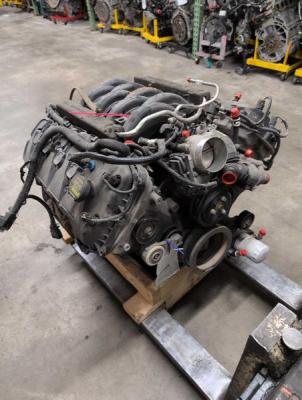Ford Explorer Engine
One of the primary selling points of the Ford Explorer engine is its long-term dependability. For years, professionals, families, and adventurers have relied on this SUV due to its robust engine and extended lifespan. Ford engineers have always placed a high premium on longevity, reduced maintenance needs, and operating economy while creating Explorer engines.With regular upkeep like oil changes, timing chain inspections, and coolant flushes, the Ford Explorer engine may operate dependably for many years. The regular sight of well-maintained Explorers with over 200,000 km still going strong is a testament to the engine's build quality. The Ford Explorer engine has evolved significantly since the SUV’s debut in the early 1990s, becoming one of the most versatile and powerful engine lineups in the mid-size SUV segment. Over the years, Ford has continuously refined the Explorer’s powertrain to meet changing consumer demands for performance, fuel efficiency, and towing capacity—making the engine one of the SUV's most vital selling points.
The First Generation (1991–1994): The Birth of a Legend
The Ford Explorer was introduced in 1991 as a replacement for the Bronco II. The first-generation Explorer featured a 4.0L Cologne V6 engine producing around 155 horsepower and 220 lb-ft of torque. While it wasn’t built for speed, this engine offered decent torque for light off-roading and towing. Reliability and simplicity were the hallmarks of this early Ford Explorer engine, helping the SUV quickly gain traction in the American market.
Evolution into Power and Efficiency (1995–2005)
As the Explorer gained popularity, Ford improved its engine technology. By the late 1990s, the Explorer was offered with multiple engine choices including an updated 4.0L SOHC V6 and a more powerful 5.0L V8 engine producing 215 horsepower. These upgrades were introduced to boost performance for families seeking more than just a rugged off-roader.
In the early 2000s, the Ford Explorer engine lineup was enhanced further. The V8 version was upgraded to a 4.6L Triton V8, which increased horsepower and torque significantly, making the Explorer suitable for heavier towing and long highway trips. However, fuel efficiency was still an area of concern, especially as fuel prices began to rise.
A Shift Toward Modernization (2006–2010)
The mid-2000s marked a major shift in engine design for the Ford Explorer. The Explorer was redesigned with a focus on safety, comfort, and better road manners. The engine lineup remained relatively similar with the 4.0L V6 and 4.6L V8, but both were refined for smoother performance and improved emissions. Ford started incorporating more modern engine management technologies, enhancing the SUV’s reputation for drivability.
EcoBoost and the Rise of Turbocharging (2011–2019)
One of the most significant changes in the Ford Explorer engine came in 2011 with the adoption of Ford’s EcoBoost technology. The move from traditional V8s to turbocharged four- and six-cylinder engines marked a major shift. The base engine became a 2.0L turbocharged EcoBoost I4, while more powerful versions included a 3.5L V6 and a 3.5L twin-turbocharged V6 in the Explorer Sport and Platinum trims.
These EcoBoost engines brought a perfect balance of power and efficiency. The 3.5L EcoBoost V6, in particular, delivered an impressive 365 horsepower, while still maintaining better fuel economy than older V8s. This innovation helped Ford stay competitive as fuel efficiency and emissions regulations tightened globally.
Present and Future: 2020–Today
The latest generation of Ford Explorers continues to showcase how advanced the Ford Explorer engine has become. The base engine is now a 2.3L EcoBoost I4, producing up to 300 horsepower and offering excellent fuel economy for a midsize SUV. For those seeking performance, there’s a 3.0L twin-turbocharged V6 delivering up to 400 horsepower in the ST model—making it one of the most powerful Explorers ever made.
Ford also introduced a 3.3L V6 hybrid engine, combining power with environmental responsibility. The hybrid Explorer offers great towing capacity and a longer range per tank, making it a strong contender in the hybrid SUV market. 2025-7-30 18:12 How To Migrate Magento 1 Database to OpenMage Safely? Toilet Partition Manufacturers: The Silent Heroes of Smart Commercial Interiors Delta Airlines Columbus Office +1-855-742-0149 Copa Airlines DCA Terminal +1-855-742-0149 Independent Escorts in Aerocity Will Make You Feel Relaxed & Comfortable Forex Trading for Beginners: A Guide to Prop Firms and Funding Pips Air Canada ZRH Terminal +1-855-742-0149 How to Get a Taxi from Madina Train Station to Your Hotel Golf Tees and Cigarette Boxes: An Unexpected Connection Same Day Custom T-shirt Printing London – Fast, Stylish, Reliable How to Get a Taxi from Your Hotel to Madina Train Station: A Quick Guide How Webcraftio Ecommerce Development Company Changed My Online Business Nexterix Gave Me the Easiest Way to Lookup MC Number
